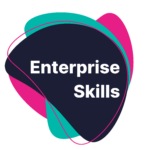Syllabus: AQA A-level Economics
Module: Individuals, Firms, Markets and Market Failure
Lesson: 4.1.4 Production, Costs and Revenue
Jump to Section:
Introduction
Production, costs and revenue form the heart of how firms operate in a market economy. This section extends the foundations laid in 3.1.3 to a more detailed A-level standard, deepening students’ understanding of short-run and long-run cost behaviours, revenue models, and how firms use production decisions to maximise objectives. Aligned with the AQA A-level Economics (7136) syllabus【21:3.1.3】, this unit prepares students for real-world application and exam success by connecting economic theory directly to firm behaviour and market structures.
Key Concepts
-
Production and Productivity: Students explore how inputs are converted into outputs, with a focus on labour productivity and its influence on competitiveness.
-
Specialisation and Division of Labour: Revisiting these concepts with a sharper focus on efficiency gains and the use of money as a medium of exchange.
-
Short-Run and Long-Run Costs: Understanding fixed versus variable costs, and how economies and diseconomies of scale shape the long-run average cost curve.
-
Revenue and Profit: Differentiating between total, average, and marginal revenue, alongside profit maximisation and alternative business objectives.
-
Economies of Scale: Internal and external factors that allow firms to grow efficiently, plus the limits of growth when diseconomies occur.
Students are expected to calculate average costs, understand cost curves, and link theory to graphical representations【21:3.1.3】.
Real-World Relevance
Real-world examples bring theory alive:
-
Amazon’s Scale: Amazon’s use of economies of scale to dominate logistics and warehousing demonstrates internal economies, particularly financial and technical.
-
Small Business Diseconomies: Rapid growth in SMEs can lead to communication breakdowns and loss of employee motivation, clear examples of diseconomies of scale.
-
Uber’s Revenue Structures: Understanding different revenue models becomes tangible through gig economy firms like Uber, which rely on variable costs and dynamic pricing strategies.
Discussing live business scenarios helps students apply theoretical models critically, just as AQA expects【21:3.1.3】.
How It’s Assessed
AQA assesses this unit primarily through:
-
Data Response Questions: Students must analyse cost, revenue, and production data, often interpreting graphs or tables.
-
Short Answer and Extended Responses: Command words like “explain”, “analyse”, and “evaluate” are frequent【26:Command words】.
-
Diagrams and Calculations: Students are required to construct, interpret, and analyse production, cost, and revenue curves.
Key exam technique: always anchor responses to real-world examples where possible, and justify diagrams with clear written explanation.
Enterprise Skills Integration
This topic is ideal for embedding enterprise thinking:
-
Problem-Solving: Students assess how firms respond to rising costs or declining productivity.
-
Decision-Making: Understanding the trade-offs firms face when expanding production.
-
Numeracy and Data Handling: Quantitative skills are critical when calculating costs, revenue, and profitability, aligning perfectly with Enterprise Skills’ “learning by doing” focus【27:Enterprise Skills – Brand Kit】.
Teachers can also use Enterprise Skills’ MarketScope AI tool to simulate cost structures and revenue strategies in different market conditions.
Careers Links
Connecting learning to future pathways:
-
Gatsby Benchmarks 4 and 5: This content connects curriculum learning to careers by modelling real business decision-making【31:ES – empathy_map_careers_leads】.
-
Relevant Career Roles: Management consultants, business analysts, operational researchers, and entrepreneurs all rely on understanding cost structures and efficiency.
-
Further Study: Strong grounding in this topic supports degrees in Economics, Business Management, and Finance.
Highlighting these pathways can boost student motivation and clarity on “where this learning leads”.
Teaching Notes
Tips for delivery:
-
Graph Practice is Key: Regularly practise drawing cost curves and interpreting movements in average costs and revenue.
-
Link to Recent News: Use firms like Tesla, Amazon, and Uber to anchor abstract concepts in current business realities.
-
Common Pitfalls: Students often confuse shifts along curves with shifts of the curves themselves. Drill this distinction early.
-
Extension Activities: Run a classroom simulation where students act as managers deciding whether to expand production given different cost conditions, using MarketScope AI or a simple spreadsheet model.
Differentiation Suggestions: Scaffold complex numerical calculations with worked examples for mixed ability groups. Offer challenge tasks like critical evaluation of real companies’ scaling strategies for high-attaining students.


